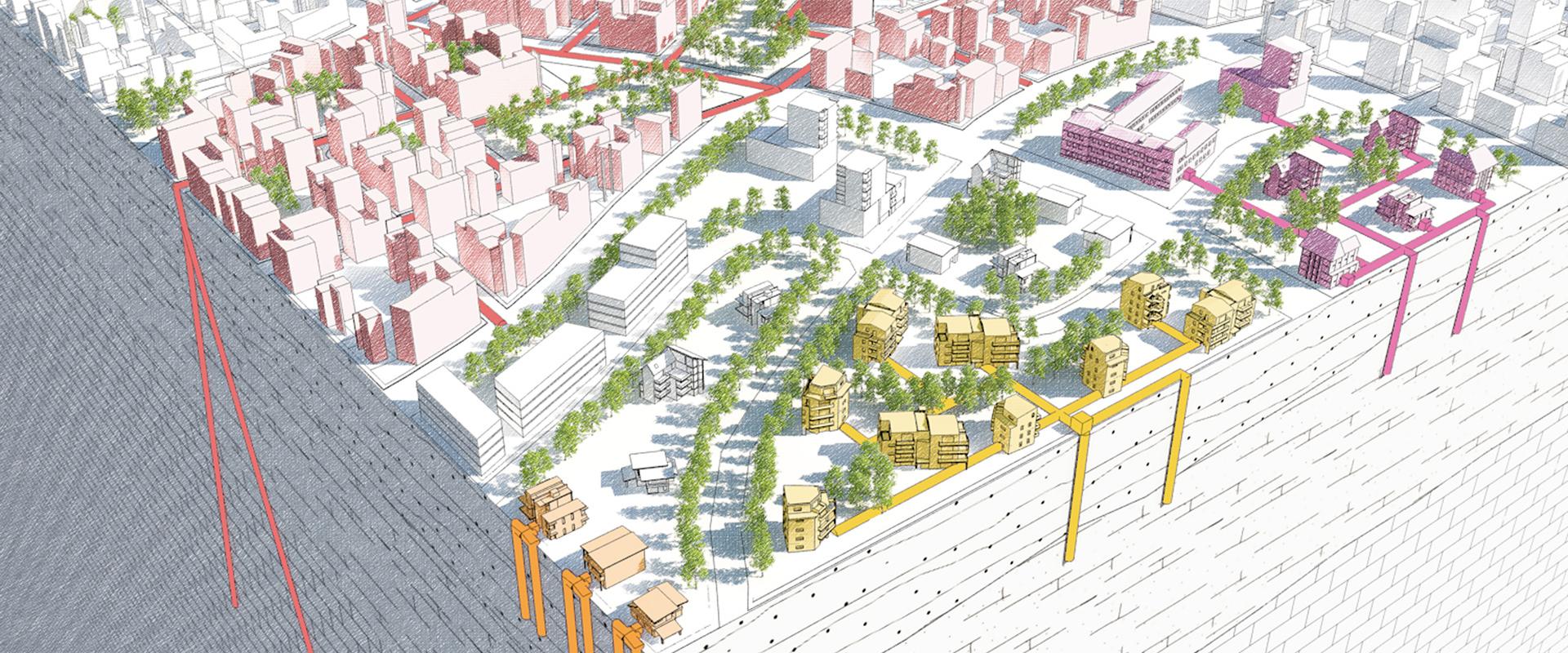GEOCO2: capturing and storing CO2 in the Centre-Val de Loire region
Transcription
BRGM PRESENTS GEOCO2
A PROJECT ACCEPTED IN THE CENTRE-VAL DE LOIRE REGION (2018 OPEN CALL FOR PROPOSALS)
GEOCO2: A PROJECT COMBINING CO2 STORAGE AND GEOTHERMAL HEAT EXTRACTION GEOCO2: WHAT'S THE END GOAL?
GEOCO2 is an initiative to assess the potential in the Centre-Val de Loire region to implement a new carbon sequestration technology we're calling CO2-Dissolved that will reduce industrial CO2 emissions in the region while simultaneously producing sustainable energy.
HOW DOES CO2-DISSOLVED WORK?
The idea is to store completely dissolved CO2 in aquifers deep in the Earth's crust. Aquifer water is briny and not potable. But it is also naturally hot, between 40 and 90 degrees Celsius. We first pump out the aquifer's hot water to the surface through a well to tap its heat energy into a district heating network to warm buildings. Once it cools back down, the water is reinjected into the aquifer, only we infuse it with CO2 captured from industrial emissions, dissolving the CO2 in the reinjected water and storing it in the aquifer. This cycle of pumping and reinjecting via a binary well system called a well-doublet is non-stop, like conventional geothermal exploitation systems common in the Paris region. The difference is adding CO2 in a completely dissolved form to the reinjection. This is to maximum concentrations: no more than 50 kg of CO2 per m3 of water. Given this limit of CO2 we can dissolve in the water, the technology is particularly well suited for small industrial emitters of CO2 and provides them with a way to eliminate or significantly reduce their carbon footprint.
CAN CO2-DISSOLVED REALLY WORK IN CENTRE-VAL DE LOIRE?
To find CO2-Dissolved-compatible sites in the Centre-Val de Loire region, we've developed interactive GIS maps that integrate publicly available data useful for the project. First, we marked out on the maps all the industrial sites emitting more than 10,000 tons of CO2 per year based on pollution-emissions databases. As we see here, some 40 industrial sites across the Centre-Val de Loire region emit over 10,000 tons of CO2 per year. On average, we see small emitters emitting 38,000 tons of CO2 per year with 4 or 5 larger sites with greater emissions. At each site, we list annual carbon emissions according to the database. After that, we coupled all this information on CO2-emitting sites with information on the sites' subsoil characteristics, namely with regard to five deep aquifers. Looking at Dogger limestone, we can see geological information on things such as faults and catchment areas for drinking water, meaning water that is ineligible for CO2-Dissolved compatibility. We also see relevant aquifer information such as temperature. There's a 30-degree difference between the southeast and northeast of the region, which is the result of differences in aquifer depth. This tool is available online to help people assess compatibility between proven geothermal resources, typically underutilised in the region, and small CO2 emitters.
WHAT IS GEOTHERMAL ENERGY GOOD FOR?
CO2-Dissolved offers operational and economic advantages through dual subsoil exploitation, first for storing dissolved CO2, second for converting aquifer water into energy for heating and cooling via thermal-energy systems like heat pumps and air-source heat pumps. Wherever there's potential to use groundwater resources at the surface, geothermal energy can supply heating and cooling networks in all kinds of structures and for commercial uses in fish farms, greenhouses, and swimming facilities.
WHAT DO THE REGION AND LOCAL BUSINESSES HAVE TO GAIN?
In terms of economic development, CO2-Dissolved is beneficial for a few reasons regarding new infrastructure and accompanying heating networks as well as maintenance and upkeep of the equipment involved and activity that will crop up near the installations. CO2-Dissolved is also interesting for companies looking to lower their emissions. The technology helps meet local and international commitments to reducing greenhouse gases. Lastly, it can help make the region more attractive. New companies will move to the region for the innovative, robust technology at their disposal to help them meet their goals of going greener and more sustainable.
WHAT'S DOWN THE ROAD?
The software developed for GEOCO2 harnesses lots of data on the subsoil and provides profiles of regional industrial emitters. This is available to regional, departmental, and municipal governments to help them select sites for constructing new CO2-emitting facilities so they can find sites compatible with CO2-Dissolved technology. The collaborations we've fostered for this project, namely with many companies in the region, are a testament to the genuine interest in having technology adapted to real needs for lowering operations emissions. For the same reasons, we think CO2-Dissolved can present itself as a solution for the interests of communities in the region. Alongside the GEOCO2 project, BRGM teams and partners are continuing to develop technology that in a span of three to five years' time will allow us to implement CO2-Dissolved technology on major sites, hopefully in Centre-Val de Loire.
GEOCO2: A PROJECT COMBINING CO2 STORAGE AND GEOTHERMAL HEAT EXTRACTION
The CO2-Dissolved technology aims to reduce CO2 emissions while producing renewable, low-carbon energy. The principle is as follows: hot geothermal water is pumped up from deep aquifers to be used as a renewable energy source. The CO2 emitted by factories is captured and then dissolved in the geothermal water – after its energy has been used – to heat the factory buildings, for example. This water is then returned to the ground, in order to store the CO2 and reduce greenhouse gas emissions.
This technology, which is currently being developed by BRGM and its partners, is particularly well suited to industries with low CO2 emissions.
As part of the GEOCO2 project, BRGM cross-referenced data from industrial sites that emit more than 10,000 tonnes of CO2 a year with subsurface data concerning the geothermal potential in the area. These studies highlighted various interesting areas in which this technology could be exploited in the Centre-Val de Loire region.







